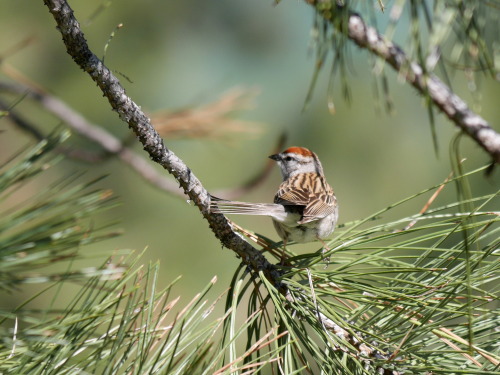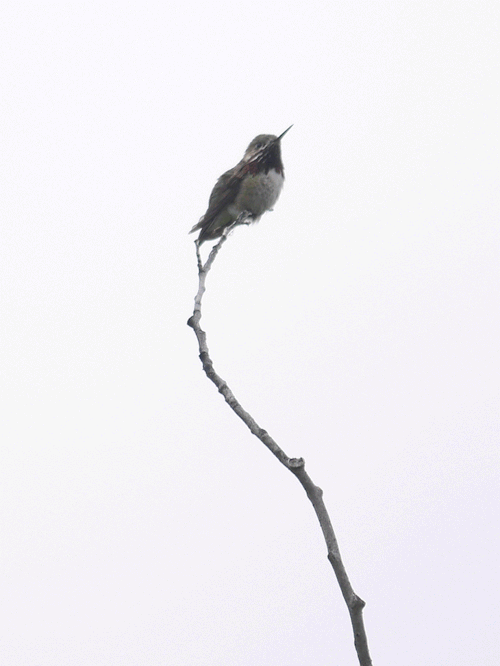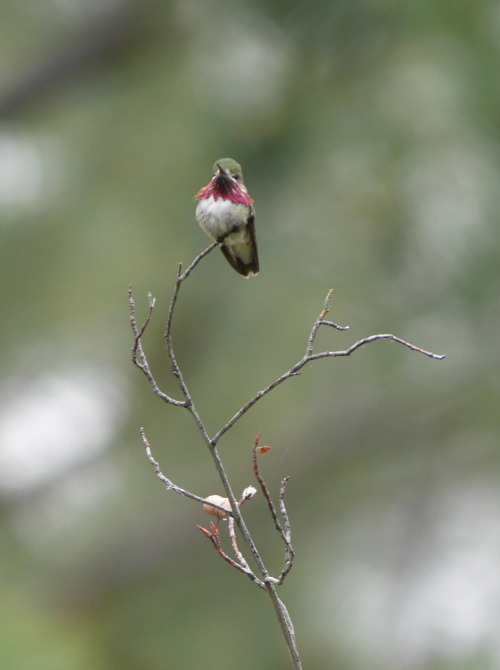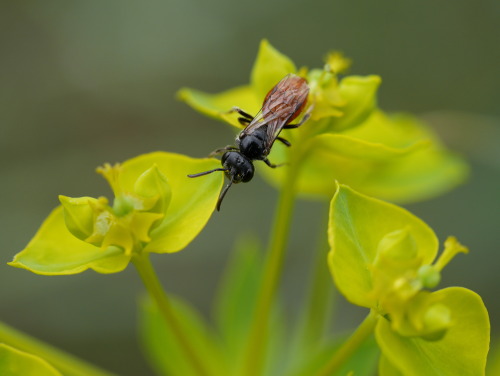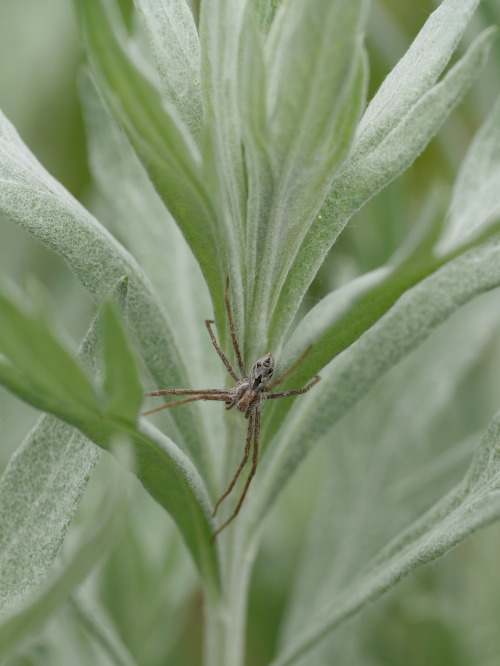#blue mountain national recreation area
Chipping Sparrow (Spizella passerina) Emberizidae
Blue Mountain National Recreation Area, MT
May 13, 2016
Robert Niese
These charming birds are relatively abundant and widespread throughout North America and are a quite underappreciated bird. Here in the west, they are generally only found in or around coniferous forests and pineland savannas, whereas their eastern cousins are a much more urban or suburban bird. Their song is a loud trill which, often to the chagrin of field ornithologists, varies substantially among individuals and can easily be confused with the trills of Dark-eyed Juncos, towhees, and many species of warblers.
Post link
Calliope Hummingbird (Selasphorus calliope) Trochilidae, male
Blue Mountain National Recreation Area, MT
May 16, 2016
Robert Niese
Calliope hummers are the smallest breeding bird in North America north of Mexico. Males perform an extravagant display to females that involves a steep dive, a barrel-roll, and a high-pitched sound produced by their tail feathers. Watch the whole courtship display and learn more about how it’s done here!
Post link
Sympetrum corruptum “Variegated Meadowhawk” Libellulidae
Blue Mountain National Recreation Area, MT
May 13, 2016
Robert Niese
As its name might suggest, these dragonflies are quite variable. So much so, that I’m questioning this ID (corrections would be very much appreciated). For more info on how to identify PNW odonates, check out this field key from the Slater Museum of Natural History. S. corruptum is a relatively common dragon found throughout much of northern North America near boggy meadows, swamps or ponds. During migration, however, it can be found wandering through just about any habitat from Honduras to Mongolia. Dragonflies are impressive migrators and some species can regularly travel 100 miles in a single day.
Post link
Sphecodes(arvensiformis) “Cuckoo Sweat Bee” Halictidae
onEuphorbia esula “Leafy Spurge” Euphorbiaceae
Blue Mountain National Recreation Area, MT
May 16, 2016
Robert Niese
Sphecodesbees are cleptoparasitic, cuckoo-like bees that lay their eggs in the nests of other sweat bees. Despite their outward appearance, these insects are not wasps, but they have converged on a very cuckoo-wasp-like life-history strategy. A female enters the nests of another Halictid, consumes a developing egg and replaces it with her own. Unfortunately, these bees, like the vast majority of Halictids, are very poorly studied and there are few entomologists capable of accurately identifying them beyond the genus level. Oh, and by the way, Leafy Spurge, while it is one of Missoula’s most widespread invasives, is also one of my favorite spring plants. They’re just such odd organisms! More photos and natural history info to come, I’m sure.
Looking back at my other photos of these bees from years ago makes me realize how far my skills as a photographer and natural historian have progressed.
Post link
Hygrophorus speciosus “Brilliant Wax-cap” Basidiomycota
Blue Mountain National Recreation Area, MT
May 16, 2016
Robert Niese
The wax-caps were once considered to all be members of the genus Hygrophorus, but have recently been divided into several new genera, all of which are still taxonomically debated. This particular species remains in the genus Hygrophorus due to its ectomicorrhizal growth habit. You can find it in drier, east-side forests where larch is abundant.
Post link
Philodromus histrio “Theatrical Running Crab Spider” Philodromidae
Blue Mountain National Recreation Area, MT
May 16, 2016
Robert Niese
I have no idea why this species of running crab spider has been given the species epithet “histrio.” In Latin, histriomeans “actor” or “player.” Perhaps the arachnid’s propensity for waving its arms about whenever a predator (or camera) approaches earned it this descriptor. Or perhaps some early entomologist first encountered it engaged in an impressive act of twig-impersonation. In fact, when I first stumbled upon this individual, its legs were perfectly aligned in the shape of an X and pressed flat against the underside of this Artemisiastem, perhaps hoping to be mistaken for plant matter. Regardless, these Philodromids are widespread, common, and relatively recognizable. Look for them in northern latitudes and in the Rockies anywhere you might find weedy Asteraceous plants like Artemisia,Tanacetum,Centaurea, or Senicio (yes, I know, that encompasses just about every habitat).
Post link

